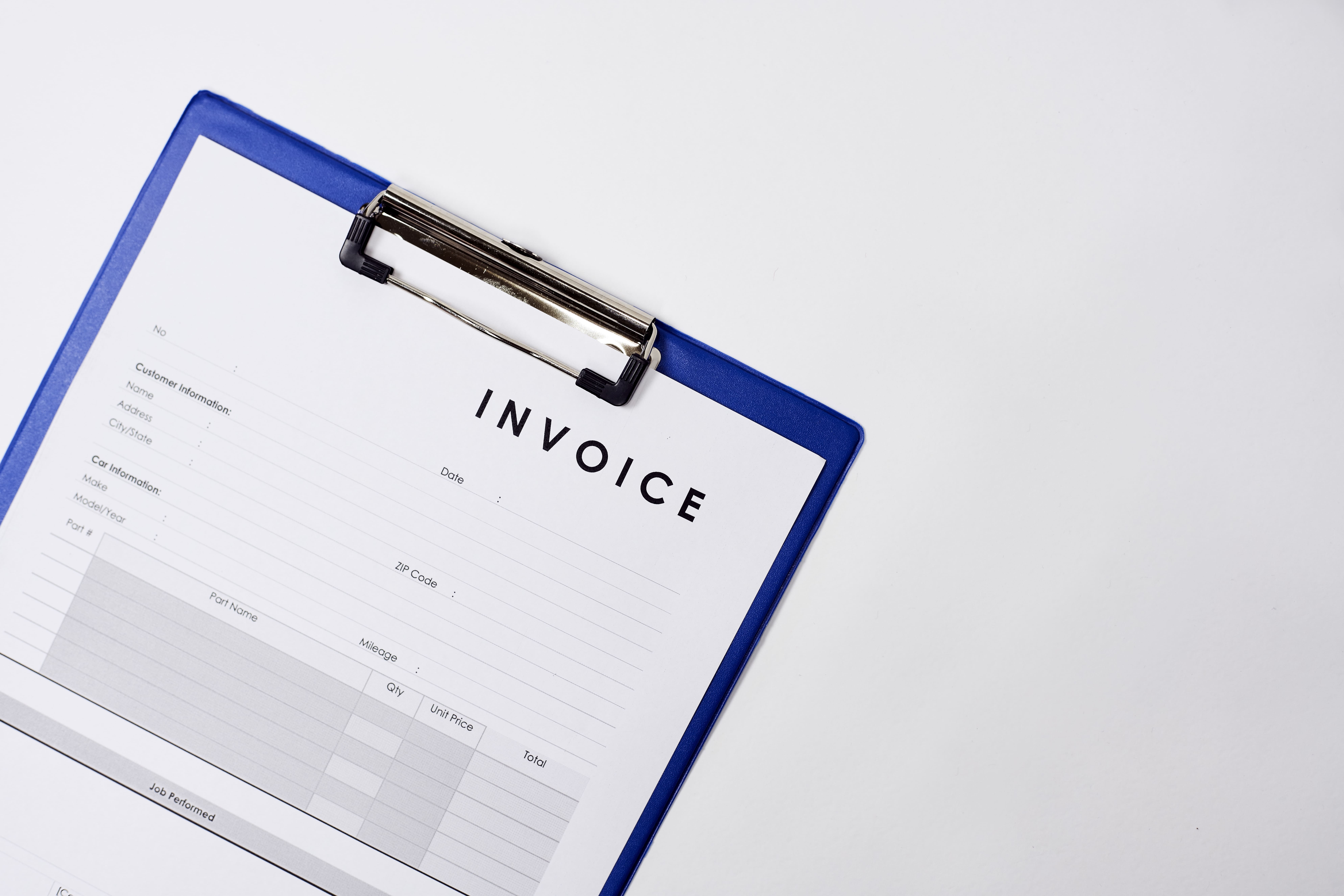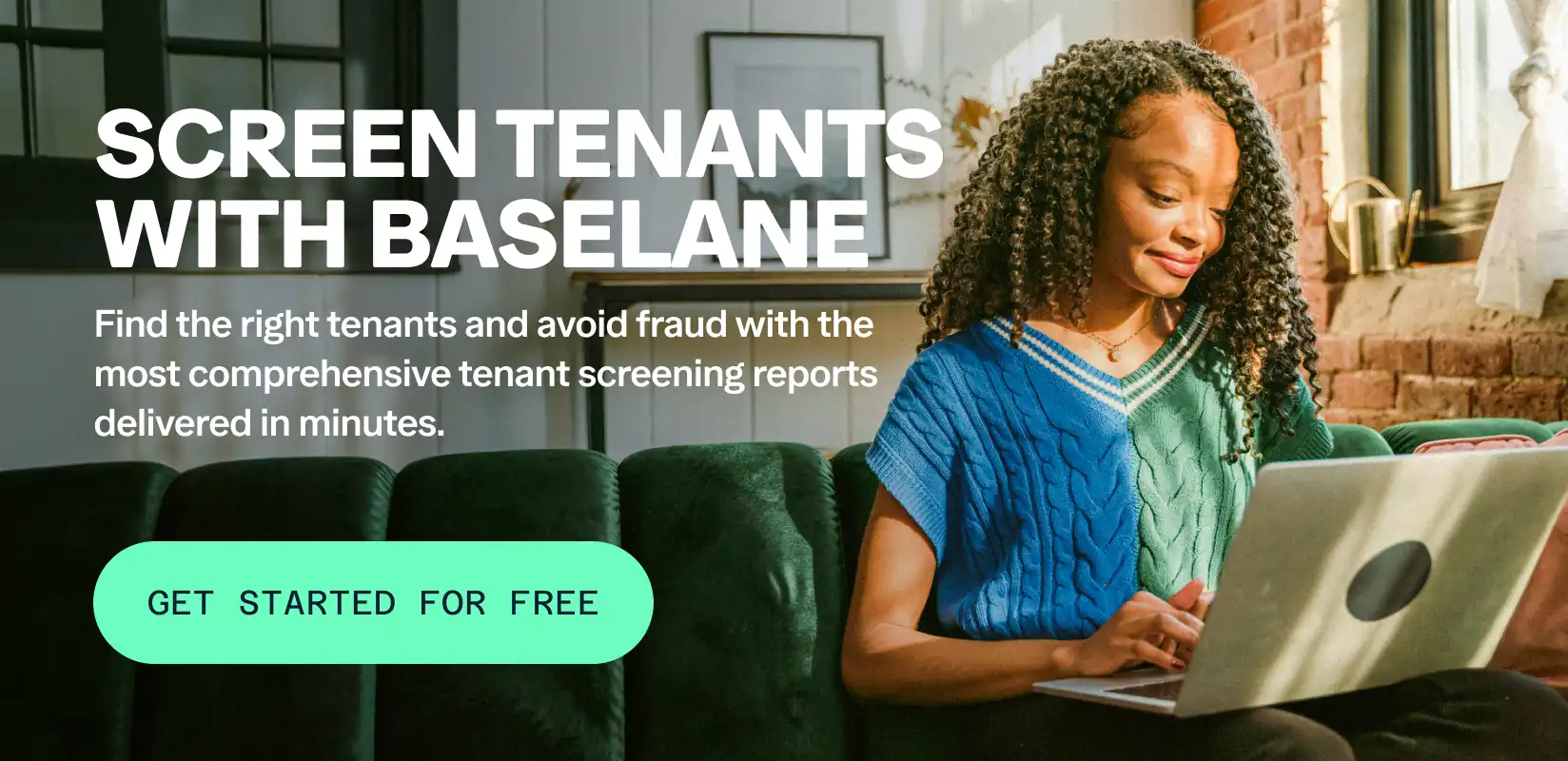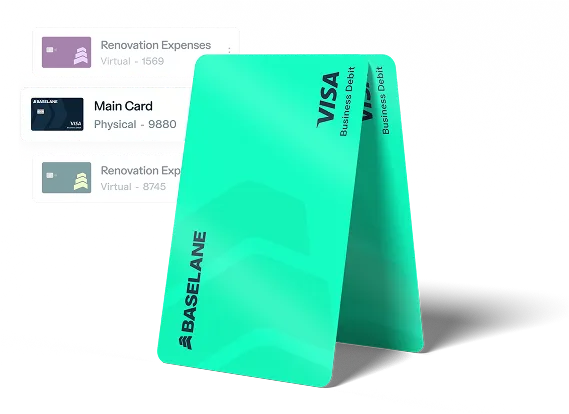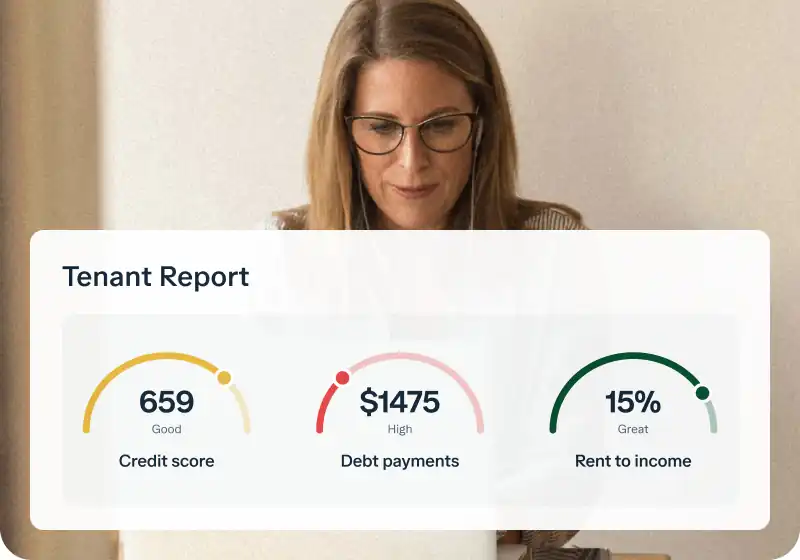Managing rental property finances effectively is crucial for real estate investors. Traditional methods of rent collection, such as checks or cash, can be slow, insecure, and administratively burdensome. Automated Clearing House (ACH) payments offer a modern, efficient alternative, streamlining the invoicing process and enhancing financial predictability for landlords.
This guide will help you understand how to send ACH payments, set up, and manage ACH payment invoices to optimize your rental business.
Key takeaways
- ACH payments offer significant cost savings and improved security over traditional payment methods.
- Landlords can automate rent collection with ACH, ensuring predictable cash flow.
- Setting up ACH involves selecting a reliable provider and securely collecting the tenant's bank details.
- Effective management includes tracking payments, reconciliation, and addressing disputes.
- Specialized property management software, like Baselane, integrates ACH for a seamless financial workflow.
What are ACH payments, and how do they work?
ACH payment is an electronic funds transfer made between bank accounts through the ACH network. This network processes large volumes of credit and debit transactions.
It serves as a central clearing facility for all Electronic Funds Transfers (EFTs). Landlords often use EFT for rent payments because it’s secure, traceable, and faster than mailing checks.
According to NACHA, in 2023, over 31.5 billion ACH payments were made for approximately $80.1 trillion, showcasing its widespread adoption and reliability. Landlords primarily use ACH debit, where they initiate a pull of funds from a tenant’s bank account after obtaining proper authorization.
The process typically involves an Originating Depository Financial Institution (ODFI) initiating a request through the ACH Operator to send ACH transfer between banks. The ACH Operator then routes the instruction to the Receiving Depository Financial Institution (RDFI), which credits or debits the recipient's account. This electronic system ensures a secure and traceable transaction record. ACH credit transactions are initiated by the payer, while ACH debit transactions are initiated by the recipient, like a landlord collecting rent.
The benefits of ACH payment invoices for landlords
Embracing ACH payment invoices can significantly transform a landlord's operational efficiency and financial stability. These electronic transfers offer distinct advantages over traditional payment methods.
Cost savings compared to traditional methods
One of the most compelling benefits of ACH payments for landlords is the substantial cost reduction. ACH transactions generally have lower fees, averaging $.26 to $.50 for organizations.
This contrasts sharply with credit card processing fees, which typically range from 1.5% to 3.5%, or the higher costs associated with checks, which can cost $2.01–$4 to issue and $1.01–$2 to receive. For landlords managing multiple properties, these savings can accumulate quickly, directly impacting their bottom line.
Automation and recurring payments
Automation is a game-changer for landlords, and ACH payments excel in this area. You can set up recurring invoices for rent, ensuring that payments are initiated automatically on their due date. This reduces the administrative burden of manually tracking and requesting payments each month.
Baselane's integrated platform, for instance, allows for automated rent collection, freeing up valuable time for landlords to focus on other aspects of their business. Automated ACH payments minimize late payments and improve cash flow predictability.
This automation helps landlords maintain a steady income stream, which is vital for covering property expenses and mortgage payments. The convenience extends to tenants, who can set up auto-pay, reducing the chance of forgetting a payment.
Improved cash flow and predictability
Consistent and predictable cash flow is the lifeblood of any successful rental business. ACH payments significantly improve cash flow by reducing payment delays often associated with mailed checks.
While processing times for ACH can range from one to three business days, 80% of ACH payments settle within one business day. This provides landlords with a clearer picture of their upcoming available funds. When you send money with ACH, you can track deposits and plan spending more confidently.
Predictable income allows for better financial planning, budgeting for property maintenance, and strategic investments. Baselane’s integrated banking and bookkeeping features provide real-time insights into cash flow, further enhancing financial visibility. This helps landlords make smarter decisions about their property portfolios.
Enhanced security and digital trails
Security is a paramount concern when handling financial transactions, and ACH payments offer robust protection. The ACH network is a regulated electronic system employing strong encryption, making it more secure than handling cash or paper checks.
The Electronic Fund Transfer Act of 1978 provides important consumer protections, including liability limits and requirements for prior authorization.
Every ACH transaction leaves a clear digital trail, which is invaluable for record-keeping and auditing. This digital record simplifies financial reconciliation and tax reporting, ensuring accuracy and compliance. For landlords, this means less risk of lost payments and a streamlined process for managing ACH for accounts payable related to their properties.
Convenience for landlords and tenants
The convenience offered by ACH payments benefits both landlords and tenants. Landlords save time by eliminating trips to the bank to deposit checks or physically collecting cash. The digital nature of ACH payments streamlines administrative tasks.
Tenants can send money online with ACH and benefit from the ease of setting up recurring payments or making one-time payments from their bank accounts. They avoid the hassle of writing checks, buying stamps, or remembering to mail payments.
Instead, they can send money ACH directly from their bank account. Many platforms also offer tenant portals, making the payment process even more accessible and user-friendly.
Understanding the challenges: What landlords need to know
While ACH payments offer many advantages, landlords should also be aware of potential challenges. Understanding these aspects allows for better preparation and management of expectations.
Processing times and settlement
Unlike instant cash or wire transfers, ACH payments are not immediate. They typically take one to three business days to process and settle. This processing time can affect cash flow if not accounted for. While not instant, being able to send money through ACH within a day is still much faster than traditional methods.
It's important to communicate these timelines clearly to tenants to avoid misunderstandings about when payments will clear. For urgent transactions, landlords might consider alternatives, but for recurring rent, ACH remains highly efficient. Some services now offer the option to send money via ACH instantly, typically for an added fee.
For a detailed comparison of electronic payment methods, read about the differences between ACH vs. wire transfer.
Tenant bank account requirement
For tenants to pay via ACH, they must have a traditional bank account (checking or savings). This might be a limitation for some tenants who prefer alternative payment methods or do not have a standard bank account. Landlords should be prepared to offer alternative payment options if ACH is not feasible for all tenants.
Providing multiple payment methods ensures flexibility and accessibility for all renters. However, encouraging ACH payments for its benefits often outweighs the need for alternative solutions. Many modern tenants prefer electronic payments for their convenience.
Handling failed payments
Failed ACH payments, often due to insufficient funds (NSF) or incorrect account information, can be a challenge. When ACH payment fails, the landlord may incur a return fee from their bank or payment processor. It also requires follow-up with the tenant to collect the missed payment.
Establishing a clear policy for failed payments, including potential fees and alternative payment arrangements, is crucial. Automated systems, like those offered by Baselane, can help landlords track failed payments and automatically notify tenants.
Baselane’s banking solution also provides tools to manage property finances effectively, helping to mitigate the impact of failed payments.
Importance of authorization and consent
For ACH debits, landlords must obtain proper authorization from tenants to pull funds from their bank accounts. This authorization is typically a written or electronic agreement that specifies the amount, frequency, and duration of the payments.
Without valid authorization, ACH transaction can be disputed by the tenant, leading to chargebacks. Ensuring compliance with the Electronic Fund Transfer Act (EFTA) and Nacha rules is paramount.
Landlords should keep accurate records of all authorizations. A digital platform can help streamline the consent process and maintain documentation, ensuring you meet all regulatory requirements.
Step-by-step: How to set up ACH payment invoicing
Setting up ACH payment invoicing doesn't have to be complicated. Following a structured approach will ensure a smooth transition to this efficient payment method.
1. Choose ACH payment provider or property management software
The first step is to select a platform that supports ACH payments. Options range from general payment processors like Stripe or Square to specialized property management software. For landlords, a platform that integrates banking, rent collection, and bookkeeping, like Baselane, offers significant advantages.
Specialized solutions cater specifically to the nuances of rental property finances. They often include features designed to streamline landlord operations. This integration is vital for saving time and gaining clarity. Many property management tools also let landlords create and send a free ACH invoice each month, making rent collection more affordable.
2. Setting up your account
Once you've chosen a provider, you'll need to set up your account. This typically involves linking your business bank account to the platform. Landlords can benefit from platforms that offer dedicated banking solutions.
Baselane, for example, allows you to create unlimited accounts for each property, helping keep funds organized and automating property tagging. Using a business bank account with sub-accounts can help you manage property-specific transactions more efficiently, especially when handling rent and expenses.
Once your property accounts are active, you can send ACH payment requests directly from your dashboard without switching tools. If you’re managing several properties, look for the best bank for multiple accounts, ideally one that lets you track income and expenses separately for each property.
Many landlords ask, is it good to have multiple bank accounts? The answer is yes—separating funds by property helps simplify bookkeeping and tax reporting.
For detailed guidance on connecting your bank, explore resources on setting up ACH payments. Many landlords find it beneficial to separate personal and business finances by using dedicated accounts for their rental properties. This helps avoid commingling of funds, a best practice for real estate investors.
When setting up multiple bank accounts for real estate, make sure each one is linked to its specific property or LLC to avoid commingling funds
3. Collecting tenant bank information securely
Collecting sensitive tenant bank information requires a secure and compliant process. You'll need the tenant's bank name, routing number, and account number. Most platforms provide secure portals for tenants to input this information directly. This minimizes the risk of mishandling sensitive data.
Ensure your method for collecting this data adheres to privacy regulations. Never ask tenants to send sensitive details via insecure email or text messages.
Learn how to send ACH information securely using encrypted portals provided by property software. A secure online portal is the safest way to gather this information.
4. Verifying bank accounts
Before initiating ACH payments, it's crucial to verify the tenant's bank account. This step confirms that the provided account information is correct and active. Common verification methods include micro-deposits, where small amounts are sent and then confirmed by the tenant, or instant verification services.
Instant verification typically uses third-party services that connect directly to the tenant's bank. This speeds up the onboarding process and reduces the chances of failed payments due to incorrect details. Once verified, you are ready to receive ACH payments reliably.
Some platforms support ACH direct send, enabling verified accounts to transfer funds without delay.
Creating and sending ACH payment invoices for rent
Crafting clear and comprehensive invoices is key to successful rent collection via ACH. Your invoices serve as a formal request for payment and a record of the transaction.
Essential invoice components for landlords
An effective ACH payment invoice for landlords should include several critical components. Your ACH invoice must include the rent amount, the due date, any applicable late fees, and specific property details. Clearly state the payment period the invoice covers.
Additionally, include your business name, contact information, and any unique invoice numbers. Providing clear instructions on how the tenant can submit their ACH payment is also vital. A well-structured invoice minimizes tenant confusion and ensures timely payments.
Creating one-time vs. recurring invoices
Landlords will typically set up recurring invoices for monthly rent payments. This automation is a core benefit of ACH systems, as it eliminates the need to manually generate and send invoices each period. For specific charges like a security deposit, move-out fees, or repair costs, you can create one-time invoices.
Most property management software allows you to easily switch between these types of invoices. This flexibility ensures all financial transactions are properly documented and collected. Using ACH billing for recurring rent streamlines your monthly operations.
Customizing invoices for your rental business
Personalizing your invoices can enhance professionalism and clarify payment expectations. Many platforms allow you to add your business logo, customize color schemes, and include specific terms and conditions. You can also add notes regarding payment policies or upcoming property maintenance.
Customization helps reinforce your brand as a professional landlord. It also ensures all necessary information is presented clearly to your tenants. This attention to detail can improve the tenant experience and promote timely payments.
Sending invoices to tenants
Once created, invoices can be sent to tenants through various digital channels. The most common methods include email or a dedicated tenant portal within your property management software. A tenant portal allows tenants to view current and past invoices, pay invoices with ACH, and access their payment history. Tenants receive the invoice and send ACH payment online through a secure portal.
Digital delivery is fast, convenient, and provides a clear record of when the invoice was sent. This eliminates the delays and uncertainties associated with postal mail. Many systems also send automated reminders, further promoting on-time payments.
Managing ACH payment invoices: Best practices for landlords
Effective management of ACH payment invoices extends beyond sending them. It involves tracking, reconciliation, and proactive handling of potential issues.
Tracking payment status and notifications
Reliable tracking of payment statuses is essential for maintaining accurate financial records. Most modern ACH payment systems provide real-time updates on payment statuses, such as "pending," "successful," or "failed." Landlords receive immediate notifications, allowing for prompt action if a payment encounters an issue.
This visibility ensures you always know which tenants have paid and which payments are outstanding. Automated notifications can also alert tenants to upcoming due dates or confirm successful payments. This feature contributes to more transparent communication.
Platforms like Baselane let you track and send ACH payments online with real-time status updates.
Reconciliation with your accounting records
Seamless reconciliation of ACH payments with your accounting records is vital for financial accuracy. Integrated property management and banking platforms automatically categorize transactions. This makes it easier to match incoming rent payments with specific properties and expense categories.
Regular reconciliation helps prevent discrepancies and simplifies tax preparation. Baselane's bookkeeping features, for instance, auto-tag transactions by property and Schedule E category, providing real-time cash flow insights. This level of detail saves considerable time during tax season.
Handling partial payments and flexible rent collection
Some tenants may require options for partial payments or more flexible rent collection arrangements. While ACH systems are designed for full payments, many platforms offer features to accommodate these scenarios. Baselane offers flexible rent collection options, enabling landlords to create customized payment schedules.
Tenants can send money by ACH in installments if your platform allows flexible collection.
This flexibility can be a valuable tool for tenant retention and mitigating financial hardship. Clear communication and documented agreements are crucial when allowing partial payments. For those interested, exploring split rent payment app options might also be beneficial.
Addressing payment disputes and chargebacks
Although less common with ACH than with credit cards, payment disputes and chargebacks can occur. These often arise from unauthorized transactions or processing errors. Landlords should have a clear process for addressing these situations.
Promptly investigate any disputed payment and provide all necessary documentation to your payment processor. Strong record-keeping, including tenant authorizations and communication logs, is your best defense. This ensures compliance and helps resolve issues quickly.
Setting up payment reminders and late fee automation
Automated payment reminders are incredibly effective at reducing late payments. Most ACH invoicing systems allow you to schedule reminders days before the due date and on the due date itself. You can also automate the application of late fees according to your lease agreement.
This automation ensures fairness and consistency in fee application, removing the need for manual enforcement. It also frees up your time, making your rent payment system much more efficient. Baselane’s platform automates these tasks, giving landlords more time to focus on growth.
Choosing the right ACH payment solution: A comparison for landlords
Selecting the optimal ACH payment solution is a critical decision for landlords. The ideal platform offers more than just payment processing; it integrates seamlessly with other property management functions. Consider the table below for a quick comparison of key features.
Comparison of ACH payment & invoicing platforms for landlords
When evaluating options, prioritize platforms that offer landlord-specific features. These include automated rent collection with late fee capabilities and integrated property accounting.
For many landlords, an integrated system like Baselane is the best way to send ACH payments reliably and at low cost. It helps you manage banking, rent collection, and bookkeeping all in one place.
Cost per ACH transaction is another critical factor. While some general processors charge a small fee, platforms tailored for landlords might offer lower or no fees for certain transactions.
Integrated tenant portals and robust dispute resolution support further enhance the value of a solution. Selecting the right property management rent collection software can significantly impact your operational efficiency.
Security best practices for landlords using ACH
Protecting sensitive financial data is paramount for landlords when using ACH payments. Implementing robust security practices safeguards both your business and your tenants' information.
Data encryption and PCI compliance
Ensure that your chosen ACH payment platform uses strong data encryption to protect all transmitted information. Look for platforms that adhere to industry security standards. While ACH doesn't fall under PCI DSS (Payment Card Industry Data Security Standard) directly, many secure payment processors follow similar protocols for data protection.
This protects bank account numbers, routing numbers, and personal identification information from unauthorized access. Regular security audits by your service provider add an extra layer of protection. This commitment to security builds trust with your tenants.
Secure storage of sensitive information
Never store tenant bank account information on insecure personal devices or unencrypted spreadsheets. Utilize secure, cloud-based property management software that offers robust data storage. Access to this information should be strictly limited and protected by strong passwords and multi-factor authentication.
Baselane's platform is designed with bank-grade security tailored for rental transactions, ensuring sensitive data is handled with the highest level of care. This secure environment protects against data breaches and maintains privacy.
Regular audits and monitoring
Regularly review your payment transaction logs and financial statements for any unusual activity. Timely identification of suspicious transactions can prevent larger financial losses. Your payment provider should offer tools for transaction monitoring and alerts.
Conduct periodic internal audits of your data access protocols. Ensure that only authorized personnel can access sensitive tenant financial information. This proactive approach to security helps maintain data integrity.
Communicating security measures to tenants
Transparency about your security measures builds trust with your tenants. Inform them about how their financial information is protected and what steps you take to ensure secure transactions. Educate them on recognizing phishing attempts or other scams.
Encourage tenants to use the secure payment portal provided by your software. Open communication about security fosters a safer payment environment for everyone. It also helps them feel confident using ACH for rent payments.
Streamline your rent collection with ACH
ACH payment invoices represent a powerful tool for modern landlords, offering a blend of efficiency, security, and cost-effectiveness. By automating rent collection, improving cash flow predictability, and simplifying bookkeeping,
Baselane offers an integrated banking solution that supports ACH payments at no cost. We designed our platform to help real estate investor like you to centralize their banking, booking, and rent collection, and get visibility into their rental finances. Sign up today and find out how Baselane can transform your rental property management.
FAQs
What is an ACH payment invoice?
An ACH payment invoice is a billing document that requests payment via the Automated Clearing House network. For landlords, it typically allows tenants to authorize a direct debit from their bank account for rent. This electronic method streamlines recurring payments and provides a secure, traceable transaction record.
How long does it take to send money with ACH?
ACH payments typically take one to three business days to process and settle. While 80% of transactions settle within one business day, landlords should factor in this timeline. This allows for proper financial planning and communication with tenants regarding payment clearance.
Is it safe to send ACH payments online for rent?
Yes, sending ACH payments online for rent is generally very safe. The ACH network uses strong encryption and is regulated, offering enhanced security compared to checks or cash. Landlords must use secure, compliant platforms and obtain proper tenant authorization for added protection.

















